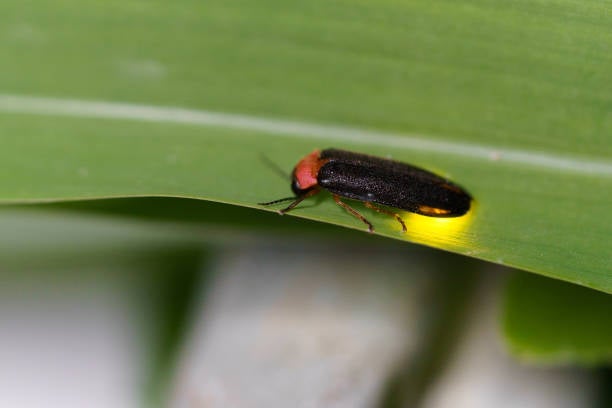For generations going back to when Native Americans roamed the southern lands of North America, fireflies, or lightning bugs, were the harbingers of twilight.
It used to be that fireflies offered a twinkling light show while crickets and other chirpy insects provided the symphonic backdrop as the sun painted the sky bright orange while it slipped slowly beneath the horizon.
Before streetlights came on, seeing fireflies dancing around the front porch of the neighbor’s house was the cue for many kids that it was time to jump on the Schwinn banana-seat bike and head on home.
Then, one day, it seemed that the fireflies just vanished.
Hummingbirds still carry on their evening routine of greedily hanging about the nectar feeder for a few more sips, lizards with a purpose scurry about and frogs the size of pencil eraser still croak loudly as if they were the size of Jabba the Hutt, but it appears, to the casual observer of the daily gloaming, that the lightning has left the bugs.

The good news is that, according to the Xerces Society for Invertebrate Conservation, the eventide insects are not extinct,yet; however, they are threatened, and about one-third of the known 175 firefly species are on the verge of some level of extinction. Even though they are deemed threatened, fireflies are not at an evolutionary dead end.
Scientists are not pointing to climate change as the culprit, but that does not mean that humankind is off the hook as being responsible.
Pat VanHoozer, formerly of Advanced Services Pest Control and known to many Augustans as the original “Bug Babe,” says that it is not so much so that fireflies are disappearing, but rather, they are on a bit of a great migration, and their targeted Promised Land is anywhere humans are not.
VanHoozer admits that modern pesticides do present a danger and can kill them off in what she terms “collateral damage,” but a typical can of bug spray is never going to wipe out a species.

“Anytime you spray for mosquitoes, they are hanging out in the same areas as the insects that you don’t want to kill, even the beneficial ones, the pollinators, they end up coming in contact with the same chemicals,” VanHoozer said.
There are pesticides available that are less harmful to the overall environment, but VanHoozer says the trade-off is that an area has to be sprayed more often, somewhat negating the benefits.
What is really causing the “great migration” is not man-made chemicals, but a different type of chemical reaction, one that gave the bug its name.

As it turns out, the little dance that fireflies seem to perform to the delight of children, the zig zagging illumination that seems as random as the colors on the disco mirror ball at Studio 54, is actually the little critters mating. Yes, the evening sky becomes a boudoir for fireflies, and you are watching are them attempting to make baby fireflies.
Properly termed, bioluminescence, is a chemical reaction that occurs in a special organ on the bug’s belly to attract a mate, kind of like a homing beacon. However, the chain reaction creates a “cold light,” unlike that of a light bulb which would cause the creature to burn itself up.
Marc Branham, an assistant professor in the department of entomology and nematology at the University of Florida, writes,“When oxygen combines with calcium, adenosine triphosphate (ATP) and the chemical luciferin in the presence of luciferase, a bioluminescent enzyme, light is produced.”
Once upon a time, when night fell, the land went totally dark save for the nighttime illumination of the moon, but that is no longer true as brightly shopping center parking lots, neon splashed boulevards, streetlights and porch lights dominate the landscape.
Entomologists say that it is the light pollution of suburbia that has driven away fireflies as the lights from Burger King and Publix, football stadiums and the like confuse the critters making it difficult for them to mate.
VanHoozer says that if you travel deep enough into the woods, you will still see fireflies. They have moved on to where they can enjoy some modicum of privacy.
Scott Hudson is the Senior Investigative Reporter, editorialist and weekly columnist for The Augusta Press. Reach him at scott@theaugustapress.com











